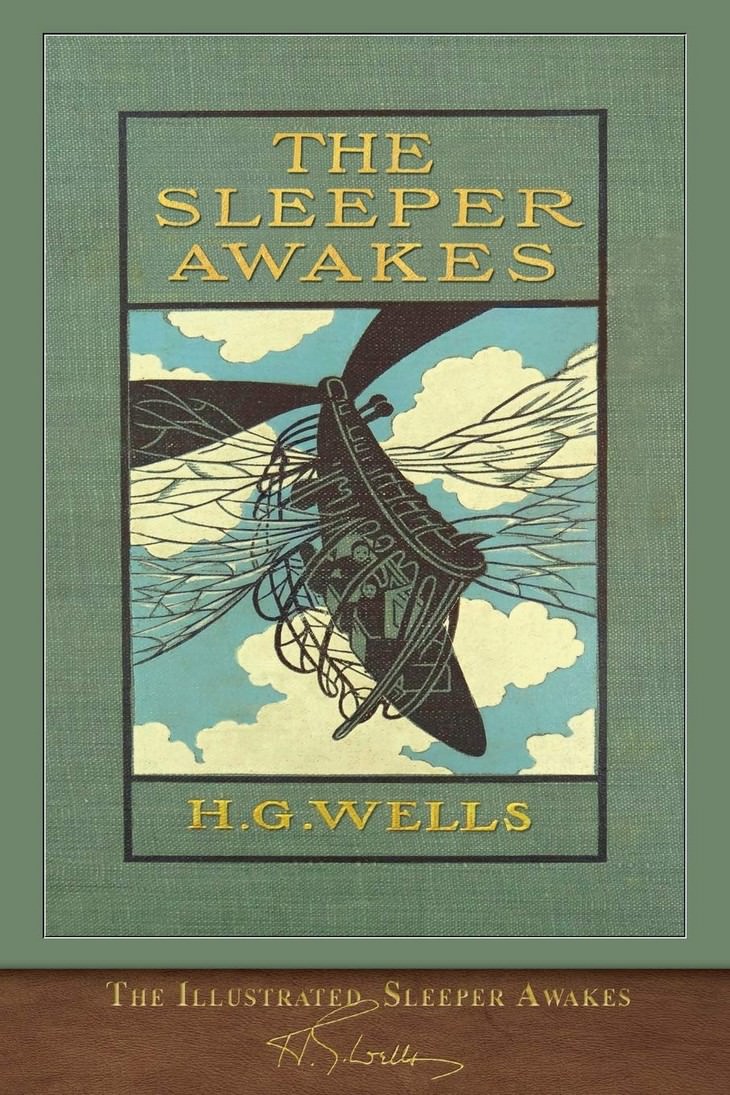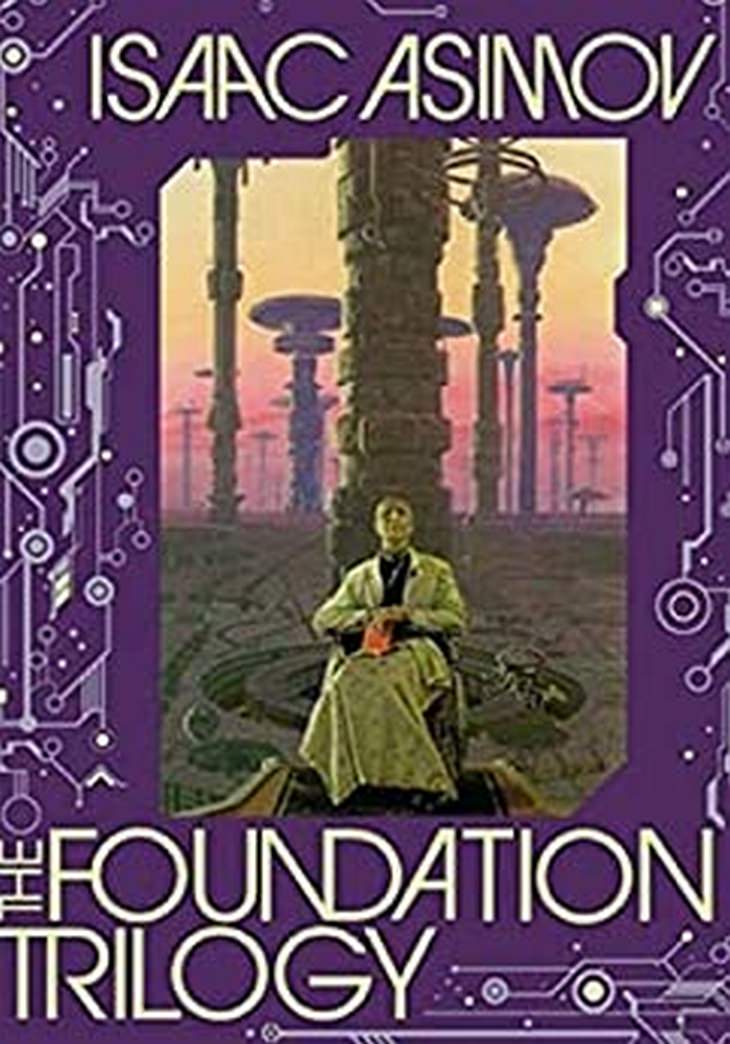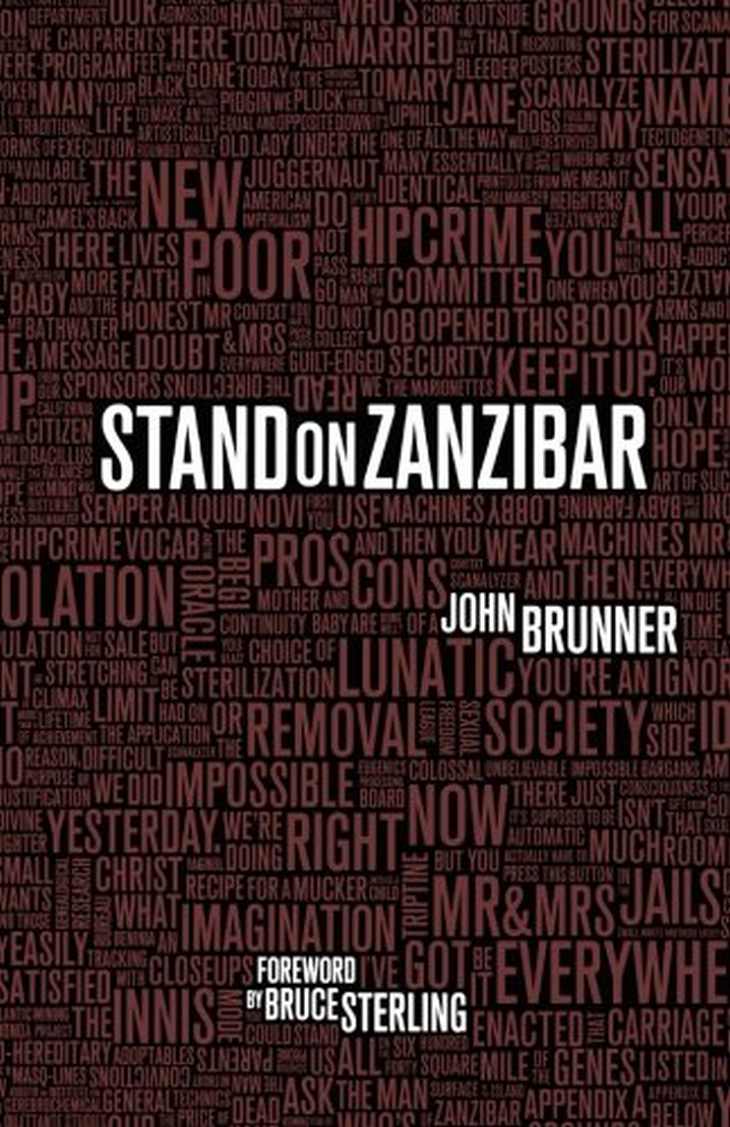

In his 1909 novella, E.M. Forster imagined a world in which people live and work exclusively from their own rooms, and communicate with each other solely through electronic means. The characters rely on technology to sustain all of their friendships and social connections, to the point that they become positively phobic of leaving their rooms and meeting other people in the flesh.
Sounds strangely familiar… In fact, in a review of the book, Bill Gompertz called it “not simply prescient; it is a jaw-droppingly, gob-smackingly, breathtakingly accurate literary description of lockdown life in 2020.” Moreover, Forster managed to predict a social media like phenomenon at a time the radio was still uncommon and television was not yet invented.

‘The Sleeper Awakes’ was first written as a short story in 1899 and then extended into a novel in 1910. Both versions focus on the main character of Graham, a Victorian man who takes a drug to cure his insomnia, and falls asleep only to wake up in the year 2100. Naturally, Graham wakes up to a completely different world, and incidentally one he is the legal master and owner of. However, during his sleep, a new world order called the White Council has risen and has been using Graham’s riches in order to dominate the world.
The first version was written 12 years before the first-ever military aerial reconnaissance mission (Italy over Turkey in 1911) and four years before the Wright brothers managed to get a plane off the ground. And yet H.G Wells’ vision about the future importance of aircraft in warfare was impressively accurate. It’s not the only time the author had an eerily correct prediction about warfare. In his 1914 novel 'The World Set Free', Wells described how radioactive elements could be used in “atomic bombs” as we pointed out in the previous article titled 9 Times the Future Was Predicted With Surprising Accuracy.

Image Source: Amazon
'A song For a New Day' is a chillingly timely novel, published as recently as 2019 and written by Sarah Pinsker. The plot takes place in a world plagued by terrorism and, you guessed it, a lethal pandemic. The combination of the two causes the government to outlaw gatherings beyond a certain size, and to radically alter the economy so nearly everyone works full-time from home, and wears protective gear at all times when away from home.
The two protagonists are a singer-songwriter who lost her livelihood since mass gatherings were banned, and another young woman who was a child when the pandemic began and is now terrified of any other person or public space. If you feel this one hits a little bit too close to home we can definitely understand.
Related: Fictional Forecasts About The Future That Became a Reality

Isaac Asimov’s 'Foundation' trilogy, written in the 1950s predicted a science called psychohistory, in which the future could be predicted by accurately measuring current developments and trends in human behavior and life. “Although statistics as a way of gauging the public existed back then, they were very rudimentary in comparison to today’s surveys and statistics,” said Paul Levinson, Ph.D., professor of communication and media studies at Fordham University.
Today, we have the technological ability to collect data that helps us predict everything from consumer behavior to voting preferences. In other words, the psychohistory in Asimov’s books has kind of become reality.

Tom Clancy, who is associated with military and spy thrillers, managed to make a few accurate predictions throughout his career. 'Debt of Honor', published in 1994, was an installment in a series following the endeavors of Jack Ryan, a former US Marine who joins the CIA as an analyst and occasional field officer (Clancy’s character also received a few film adaptations and a TV series).
In this particular adventure, a hijacked Boeing 747 crashes into the Capitol Building in Washington DC. While the fictional conflict portrayed in the book is between the US and Japan, the details of the attack are eerily similar to the events of 9/11. The book and its author received a wave of attention in the media following the 2001 disaster.

The plot of this acclaimed novel is set in a mid-western college known only as The-College-on-the-Hill and follows a year in the life of Jack Gladney, a professor who has made his name by pioneering the field of Hitler studies. The norms and practices of the futuristic world depicted in this 1985 novel often echo those of today. Shopping and consumerism are seen as therapeutic by the characters, and they are constantly flooded by news from the TV and radio, consuming a never-ending feed of information in the background of their lives to the point of inducing fatigue.
While ‘White Noise’ doesn’t predict any specific events or advances, its description of the hyperconnected world, and the fatigue it causes, are extremely on point.
Related: These Classic Books Have Great Underlying Moral Themes

This novel has gained notoriety over the years for its sheer accuracy. 'Stand in Zanzibar' was written in 1968 and is set in 2010, and the world imagined in it is not too far off from reality. The plot centers on two New York men, Donald Hogan and Norman Niblock House, who share an apartment. Through their story, we learn about Brunner’s version of the future world.
Among his predictions are the formation of the EU, the increasing acceptance of gay marriage, and the decline in tobacco use alongside the decriminalization of marijuana. Some details so spot-on they are unsettling. For example, Mr. Obomi, who happens to be... the president of the United States.
